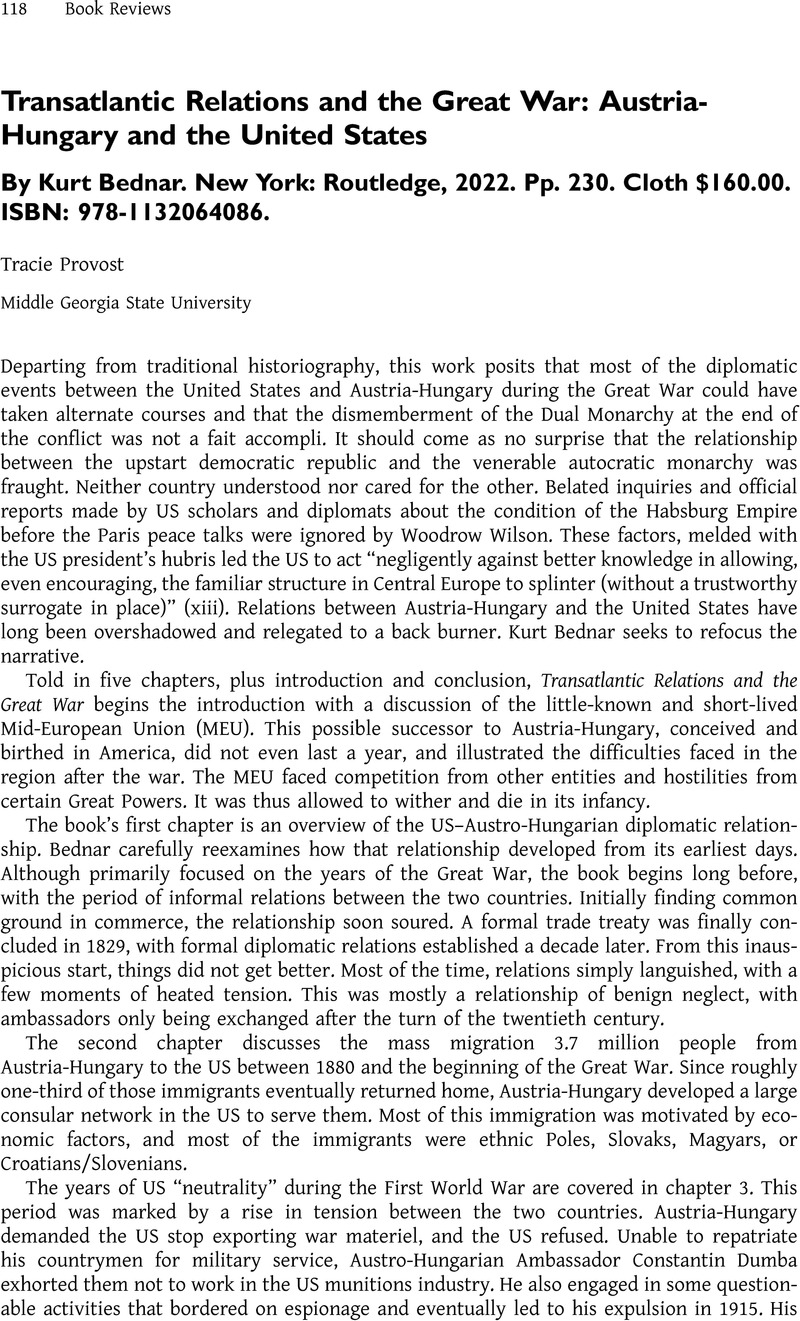No CrossRef data available.
Article contents
Transatlantic Relations and the Great War: Austria-Hungary and the United States By Kurt Bednar. New York: Routledge, 2022. Pp. 230. Cloth $160.00. ISBN: 978-1132064086.
Review products
Transatlantic Relations and the Great War: Austria-Hungary and the United States By Kurt Bednar. New York: Routledge, 2022. Pp. 230. Cloth $160.00. ISBN: 978-1132064086.
Published online by Cambridge University Press: 24 March 2023
Abstract
An abstract is not available for this content so a preview has been provided. Please use the Get access link above for information on how to access this content.

Information
- Type
- Book Review
- Information
- Copyright
- Copyright © The Author(s), 2023. Published by Cambridge University Press on behalf of Central European History Society of the American Historical Association

